 Weird Stuff
Weird Stuff  Weird Stuff
Weird Stuff  History
History 10 Legends Whose Last Moments Undid Their Glory
 Health
Health 10 Futuristic Ideas to Treat Common Medical Problems
 Weird Stuff
Weird Stuff Ten Surreal Attempts to Reverse Baldness
 Facts
Facts 10 U.S. Government Contingency Plans for the Unthinkable
 History
History 10 Weird Distractions from the Great Depression
 Movies and TV
Movies and TV 10 Fictional Kings Who Go from Good to Bad
 Food
Food The Fantastic Chemistry Behind Why 10 Popular Foods Taste So Good
 Technology
Technology 10 Futuristic Fungal Technologies
 History
History 10 Not-so-Spooky Events That Also Happened on October 31
 Weird Stuff
Weird Stuff 10 Things So Rare They’ve Only Been Found Once
 History
History 10 Legends Whose Last Moments Undid Their Glory
 Health
Health 10 Futuristic Ideas to Treat Common Medical Problems
Who's Behind Listverse?

Jamie Frater
Head Editor
Jamie founded Listverse due to an insatiable desire to share fascinating, obscure, and bizarre facts. He has been a guest speaker on numerous national radio and television stations and is a five time published author.
More About Us Weird Stuff
Weird Stuff Ten Surreal Attempts to Reverse Baldness
 Facts
Facts 10 U.S. Government Contingency Plans for the Unthinkable
 History
History 10 Weird Distractions from the Great Depression
 Movies and TV
Movies and TV 10 Fictional Kings Who Go from Good to Bad
 Food
Food The Fantastic Chemistry Behind Why 10 Popular Foods Taste So Good
 Technology
Technology 10 Futuristic Fungal Technologies
 History
History 10 Not-so-Spooky Events That Also Happened on October 31
10 Cultural Forces That Are Dead Or Dying
It’s only within the last century or so that mass media and global communication have begun to shape human culture in earnest, and in the latter half of that time frame the process has become exponential. Technologies and entertainments are implemented, make gigantic marks on the cultural landscape and become obsolete within ridiculously short periods of time, and it’s only inevitable when long-established, game changing facets of our culture begin to vanish.
At one time, the following things were revolutionary, offering us new ways of doing things or seeing the world. Some made bigger marks or stuck around longer than others, but all were important parts of the fabric of our society, and none will survive your lifetime. Your kids might not even know what you mean when you talk about…
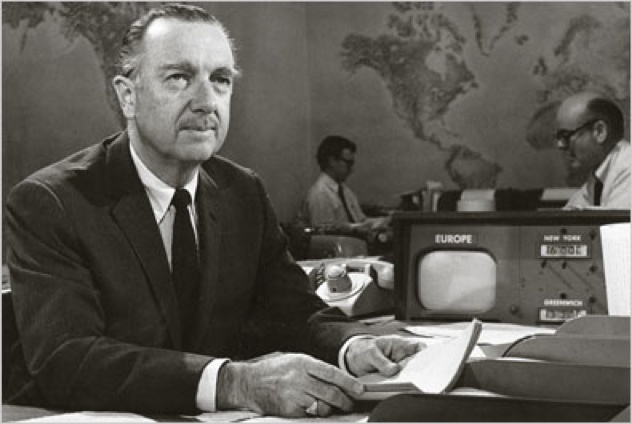
When television began as a medium, it was only logical that veterans of other media were among the first to give it a shot—radio and film performers were the first television stars, and print and radio journalists were the first to pioneer the television news format. Some of these very people were also the first “celebrity” journalists, and by the height of their cultural reach in the late ’60s and ’70s, their sway over public opinion was formidable indeed.
During that era, the network news broadcasts were central to the lives of much of the populace—especially in the United States, where CBS news dominated for decades due to the guidance and on-air presence of Walter Cronkite, who anchored that network’s nightly news from 1962 to 1981. So profound was his influence that when he proclaimed the Vietnam War a stalemate on the air in 1968, President Lyndon B. Johnson famously lamented, “If I’ve lost Cronkite, I’ve lost middle America.”
Between 2002 and 2008, consumption of online news sources increased by one hundred percent, while broadcast network news has ever-so steadily declined in the face of pervasive competition from online and cable news outlets. Where once the opinion of a single news anchor could keep the President of the US awake at night, many Americans today would be hard-pressed to name a single network news anchor—and this trend seems almost certain to continue as the avenues to timely content grow ever more diverse. Even social media is edging up to the table—many credit Twitter with breaking one of the biggest stories of 2013, the Boston Marathon bombings.
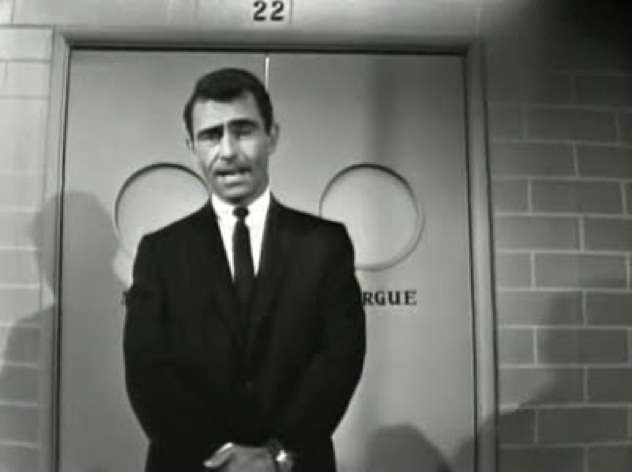
The heyday of the network news anchor was also a formative time for television storytelling, and a transition from the techniques of radio and stage. Many early television shows were essentially filmed radio or stage plays, and one of the most effective ways to try out new ideas and techniques was the anthology series. These shows would use some sort of framing device to present a new story—with a different cast—every week, often employing a stable of writers and drawing from literary and theatrical sources. One of the most popular, Studio 60, ran for over a decade between 1948 and 1958, and helped to solidify the genre and its conventions; but another, debuting a year later, would have an enormous and lasting impact not just on television, but entertainment and storytelling in general.
The Twilight Zone was created in 1958 by Rod Serling, a veteran writer of anthologies like Kraft Television Theater and Hallmark Hall of Fame. A sort of pre-pilot, “The Time Element” aired on The Westinghouse Desilu Playhouse, another anthology series; by the time its run had concluded in 1964, it had established and cemented conventions of script, camera work, and acting that had not been present on television before, and continue to be used today. Too many famous actors to list here had breakthrough appearances on the show, and one of its head writers is such a towering influence on popular culture that he may yet garner a list unto himself.
The anthology format was used to great effect to explore the fledgling television medium’s language, boundaries and techniques—a purpose it appears to have largely fulfilled, as it is all but extinct today. Even separate revivals of The Twilight Zone in 1985 and 2002 couldn’t help bring it back.

We know that you come to Listverse for entertaining, informative content outside the rigid confines and dry reporting of news and academic outlets. There has always been this demand, but there has not always been the Internet to provide so much of the supply—in fact, the chances are very good that in an alternate universe, Listverse is a print magazine. Thirty years ago, it would have been.
While the print magazine industry has been sliding just as reliably and predictably as Internet use has been rising, they now seem to be on the edge of literal extinction, with even the most dependable and recognizable brands down double digit percentage points in circulation over the last decade or so. And there doesn’t seem to be any remedy—when Time ran a controversial cover of a breast-feeding mother, or Newsweek got weirdly suggestive with one of their covers, the brief flash of publicity did absolutely zero to increase circulation.
That’s because the type of targeted, specific content provided by magazines can now be had by anyone with an Internet connection, which will be a bit of a trend here. Not all such cultural forces can blame their demise on the Web, however—one of the biggest of the last half-century is all but forgotten today despite its singular uniqueness:

For those of you who don’t know, there was a time when there were movie theaters outdoors. We know, it sounds strange. The screens were gigantic, and each parking space had a little speaker that you could stick in your window. This may be starting to sound familiar as something you’ve seen in movies and TV shows about the ’50s, but not only did they actually exist—we promise!—but there were a LOT of them.
The first drive-in theater opened in 1933 in New Jersey. Over the next few years, several more popped up in California, Texas and Ohio. By 1948, fifteen years after their debut, there were over eight hundred; ten years after that, there were nearly five THOUSAND. They became neighborhood hubs, with some offering playgrounds and mini golf, and others able to accommodate up to 3000 cars within view of their titanic screens. For a brief period in the late ’50s and early ’60s, drive-ins eclipsed indoor theaters in popularity.
Three main factors contributed to the decline of the drive-in: increasing real estate costs, the nationwide adoption of daylight savings time—which shaved an hour from viewing time during the peak summer hours—and, of course, the advent of VCRs and home media. Speaking of which…
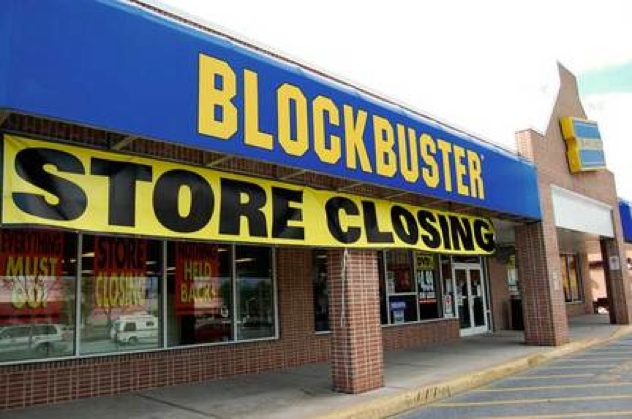
Readers of a certain age will remember the first time they walked into a video store, and saw all of the video carts, and realized that these were movies that you could take home and watch, which was just revolutionary. From the time home video exploded onto the cultural landscape in the late ’70s until the advent of the DVD, it was tough to go a few blocks in any decent-sized town without seeing a video store—but then, at the birth of that new format, something strange happened.
Despite being obviously superior to VHS tapes, the dominant format of years past, DVD sales and rentals did not live up to industry expectations; except in one completely unexpected area—online rentals. Netflix was established in 1997, the same year DVDs became widely available, and their model of ultra-convenient online ordering and mail delivery put an immediate and significant dent in brick and mortar DVD rental business. And that was BEFORE Netflix began digital streaming, which has since annihilated even its own DVD rentals.
With the type of content traditionally offered by video stores now available online something very close to 100% of the time—and Redbox covering the rest—the days of the physical video store are numbered. The largest chain, Blockbuster, was acquired by Dish network in 2011, and as of 2013 the number of US stores has dwindled down to around 500, from over 3,000 just five years ago. In 1989, there were almost 90,000 video stores in the US.

Given what we’ve seen so far, it should come as no surprise that newspaper circulation is steadily dropping as more and more people migrate to the Web for current events. But it’s not dropping steadily—the drop is accelerating, and pretty rapidly. What’s more, behemoths like USA Today that traditionally buck these types of trends are no longer able to do so, and there are literally no newspapers whose ad revenue is growing.
At this point, the ability of these familiar mastheads to survive depends largely on two things—their willingness and ability to go digital, and whether anyone can figure out how to maximize ad revenue in this uncharted (for them) territory. While print newspaper ads still generate 20 billion dollars a year, that’s down from over 70 billion ten years ago—and Google now pulls in more ad revenue than all US newspapers combined, being slightly more savvy as to how to generate this sort of revenue on the Web.
While these companies may be able to adapt well enough to survive in a digital landscape, the physical publications themselves—which of course require overhead to print and circulate—will almost certainly be a thing of the past before long.

When Aaron Montgomery Ward printed the first mail-order catalog for his resale business in 1872 (on a single 8×12 price sheet), he probably had no idea that he was pioneering an entirely new sort of global commerce. By enabling customers to browse at their leisure and buy in private, Ward (and soon, his competitor Richard Warren Sears) had created an entirely new incentive to buy—that of convenience. By the dawn of the twentieth century, mail order was pulling in billions in today’s dollars; by 1908, you could literally buy a house by mail order.
While there are certainly plenty of print catalogs still in circulation today—over 10,000, according to the National Directory of Catalogs—their numbers are dwindling just as quickly as online catalogs proliferate. All of the largest retailers long ago made the move to the Web, and the vast majority of the print catalogs still in existence cater to niche markets, and even those serve largely as conduits to orders placed online.
Yes, as difficult as it may be to believe, 12 BILLION print catalogs mailed in 2009 represents a solid 7% drop from the previous year. It’s also relevant to note that the industry states that 70% of its demographic are married, female homeowners over the age of 50, many of whom might not be completely trusting of and familiar with the Web.
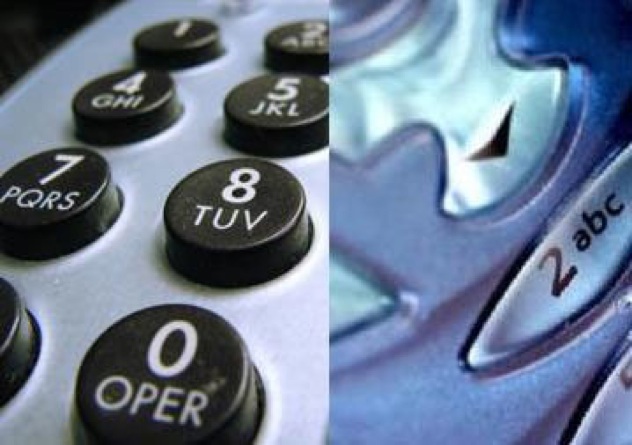
We don’t need to state the importance of the telephone—one of our greatest inventions, enabling instant voice communication anywhere, all over the world. Well, anywhere that telephone lines could be run. It is similarly obvious that cell phone use has risen every year since they became widely available. What is interesting, though, is that in 2012, the number of US households with no land line was in the majority for the first time ever. Many kids today have never used a phone that was not wireless.
While this doesn’t mean a whole lot to established telecom companies, who have largely managed to roll with the wireless punches (with some recently opting to end land line service altogether), it does have interesting implications for the millions upon millions of land telephones that have been and still are being produced—not to mention the thousands upon thousands of miles of telephone lines criss-crossing the world, a diligently constructed infrastructure that will soon be completely obsolete. Yes, utility poles accommodate more than just telephone lines, but it’s not as if the lines themselves will ever be able to serve a different purpose—and as the system falls into obsolescence, lack of maintenance will become a factor.
As an aside, the aforementioned older readers might remember how revolutionary telephone answering machines seemed when they were introduced—you need never miss another call! Even land lines come standard with voice mail today—when is the last time you saw a physical answering machine? If you can even remember, you’re probably in the minority.
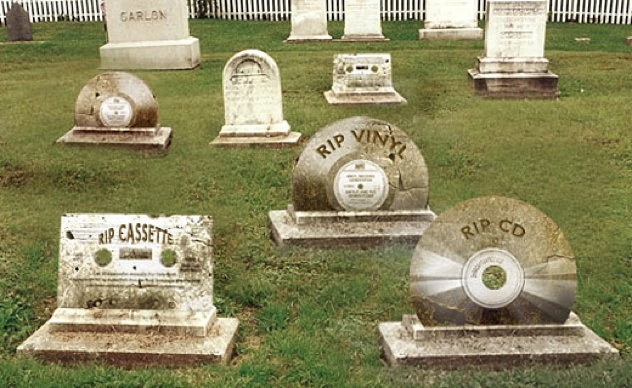
Some of you may have seen this argument rising in prominence—that in the foreseeable future, all media will be digital. We’ve already seen the negligible impact of the DVD’s introduction, but the plight of its replacement format really serves to drive this point home.
The video format war of the ’70s, between VHS and Betamax, looked set to repeat when Sony and Magnavox introduced their competing Blu-Ray and HD-DVD high-definition video formats in 2005. As the former war ended with a clear victory for VHS, the latter appeared to be won just as clearly by Blu-Ray—except that five years after this “victory”, the HD-DVD format lives on. By some measures, the formats are about equal in popularity.
This seems to illustrate a general lack of awareness about and/or passion for either format, and the music industry has proven decisively in recent years that the tactile sensation of holding physical media in your hand is dying a slow but inevitable death at the hands of convenience. As broadband and data networks ramp up their ability to provide high-definition video content, the incentive to pick a side in a format war is simply no longer there. Soon, when broadband-speed Internet access is available pretty much anywhere, any physical media format will be seen more as a barrier to obtaining content than anything else—as will the restrictions inherent to the greatest content provider in human history:
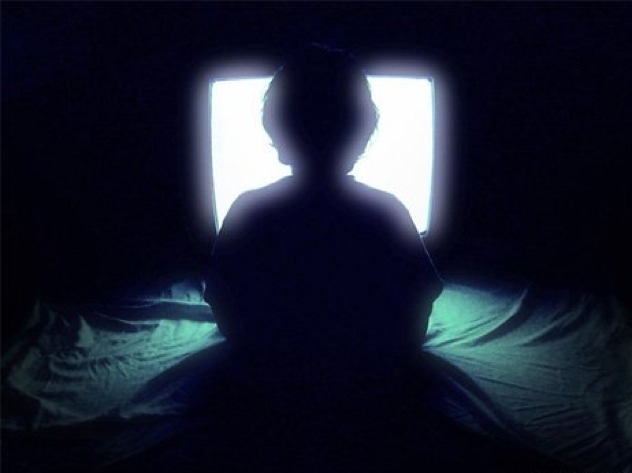
Although it has been said that we are living in a golden age of television programming, the television set itself—the big square box or long flat panel that sits in the middle of the living room, with cable, antenna or satellite plugged into it to receive broadcasts—looks like more of an archaic concept every year. Not to say that those flat panels won’t continue to sell like hotcakes; after all, they get cheaper every year. It’s just that they can hardly be considered televisions, when there is nothing distinguishing them from computer monitors.
As even the earliest home video devices demonstrated (set a timer, record the late show, watch it in the morning!), viewers will always jump at the chance to watch their shows on THEIR schedule, rather than the programmer’s. Quick (successful) adoption of DVRs by the cable companies further illustrated that point, and insanely lucrative licensing deals with Netflix and Hulu are all pointing broadcast networks toward a new business model—one that DOES NOT REQUIRE scheduled programming.
Even the least savvy viewers know that they no longer have to adhere to a network’s programming schedule to get the content they want.When your smartphone can alert you to the timeliest news content, your favorite cable programs are available for streaming practically immediately, and broadcast shows can be stockpiled on your DVR or streamed from multiple sites, it’s tough to make the case for scheduled programming being an attractive option for anyone—and it looks likely to get exponentially less attractive with each passing year.








